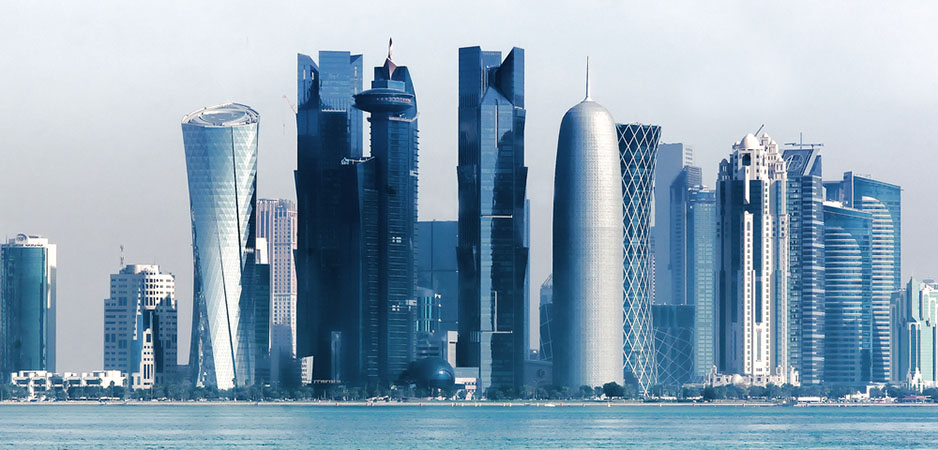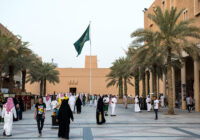Qatari conservatism is likely what Prince Mohammed would like to achieve, even if that is something he is unlikely to admit.
There’s a cutting-off-the-nose-to-spite-the-face aspect to a Saudi plan of turning Qatar into an island. In the latest episode of the Qatar crisis, Riyadh intends to dig a 60-kilometer ocean channel through the two countries’ land border that would accommodate a nuclear waste heap and a military base. If implemented, it would signal the kingdom’s belief that relations between the two Wahhabi states will not get better anytime soon. This comes despite the projection of Gulf brotherhood that was the dominant theme prior to the Saudi and Emirati-led boycott of Qatar, which began in June 2017.
It would also suggest that it is unlikely that the Gulf Cooperation Council, a six-nation bloc, would revert to its role as a regional integrative body. This is also amid unconfirmed reports that the United Arab Emirates plans to follow in Saudi Arabia’s footstep and build a nuclear waste site of its own at the closest point to its border with Qatar.
UAE Minister of State for Foreign Affairs Anwar Gargash appeared to confirm the Saudi plan, gloating on Twitter that Qatari “silence on the canal project is proof of their fear and confusion.”
Qatar Crisis: The New Channel
The message that notions of Gulf brotherhood are shallow at best is one that will be heard not only in Doha, but also in other capitals of the Middle East. The 200-meter-wide, 20-meter-deep channel would erase a border that has been closed since the imposition of the boycott.
Built a kilometer from the Qatari border, the channel would be able to accommodate merchant and passenger ships of up to 295-meters-long and 33-meters-wide, with a maximum draught of 12 meters. Adding insult to injury, the nuclear waste dump and military base would be on the side of the channel that touches the Qatari border and would effectively constitute a Saudi outpost on the newly-created island.
The plan, which is to be funded by private Saudi and Emirati investors and executed by Egyptian firms that helped broaden the Suez Canal, also envisions the construction of five hotels, two ports and a free trade zone.
The $750 million project would have the dump ready for when Saudi Arabia inaugurates the first two of its 16 planned nuclear reactors in 2027. Saudi Arabia is reviewing proposals to build the reactors from American, Chinese, French and South Korean contractors, and it expects to award the projects in December 2018.
The Divide Between Two Wahhabi States
Saudi Arabia’s cutting-off-the-nose-to-spite-the-face aspect kicks in with the fact that the channel would not only destroy Qatar’s one land border and create a glaring symbol of regional division rather than integration. It would also draw a dividing line between two interpretations of Wahhabism — an ultra-conservative Sunni Muslim worldview developed by Muhammad ibn Abdul Wahhab, an 18th-century preacher — at a time that Saudi Crown Prince Mohammed bin Salman has vowed to return the kingdom to an unidentified moderate form of Islam.
Qatar’s more liberal Wahhabism of the sea contrasts starkly with the Wahhabism of the land that Prince Mohammed is seeking to reform. In 2017, the crown prince made waves by lifting a ban on women driving, granting women the right to attend male sporting events in stadiums, and introducing modern forms of entertainment such as music, cinema and theater. These are all long-standing fixtures of Qatari social life.
As a result, the plan to physically separate Saudi Arabia from Qatar cuts it off from the most logical model for Prince Mohammed’s plan to ween the kingdom off adherence to the most restrictive form of Wahhabism, which has shaped Saudi history since the late 18th century and constituted the legitimizing basis for the creation of the modern Saudi state.
A traditional Gulf state and a Wahhabi state to boot, Qatari conservatism was everything but a mirror image of Saudi Arabia’s long-standing puritan way of life. Qatar did not have a powerful religious establishment like the one in Saudi Arabia that Prince Mohammed has recently whipped into subservience, nor did it implement absolute gender segregation. Non-Muslims can practice their faith in their own houses of worship and were exempted from bans on alcohol and pork. Qatar became a sponsor of the arts and hosted the controversial state-owned Al Jazeera Media Network, which revolutionized the region’s controlled media landscape and became one of the world’s foremost global English-language broadcasters.
Qatari conservatism is likely what Prince Mohammed would like to achieve, even if that is something he is unlikely to admit. His initial measures are in line with the conservatism of Qatar — or, for that matter, the UAE, even if the Emirates does not share a Wahhabi heritage.
Qatar’s advantage has been that it projects the ability to change without completely dumping ultra-conservative religious precepts that have shaped culture and belief systems. It projects a vision, like the one Prince Mohammed is pursuing, of a less restrictive and less choking conservative Wahhabi society that grants individuals opportunities irrespective of gender.
“I consider myself a good Wahhabi and can still be modern, understanding Islam in an open way. We take into account the changes in the world,” Abdelhameed al-Ansari, the then-dean of Qatar University’s College of Sharia, told The Wall Street Journal in 2002.
Without a doubt, Prince Mohammed’s social, economic and religious reform drive constitutes recognition of changes needed to turn the kingdom into a cutting-edge 21st-century country, and ensure the survival of his family’s autocratic rule. However, if built, the proposed channel would suggest that geopolitical supremacy has replaced ultra-conservative, supremacist, religious doctrine as a driver of the king-in-waiting’s policy. It’s a message that graphically projects division and polarization rather than regional cooperation and exploitation of synergies.
The views expressed in this article are the author’s own and do not necessarily reflect Fair Observer’s editorial policy.
Photo Credit: Zenobillis / Shutterstock.com
Support Fair Observer
We rely on your support for our independence, diversity and quality.
For more than 10 years, Fair Observer has been free, fair and independent. No billionaire owns us, no advertisers control us. We are a reader-supported nonprofit. Unlike many other publications, we keep our content free for readers regardless of where they live or whether they can afford to pay. We have no paywalls and no ads.
In the post-truth era of fake news, echo chambers and filter bubbles, we publish a plurality of perspectives from around the world. Anyone can publish with us, but everyone goes through a rigorous editorial process. So, you get fact-checked, well-reasoned content instead of noise.
We publish 2,500+ voices from 90+ countries. We also conduct education and training programs
on subjects ranging from digital media and journalism to writing and critical thinking. This
doesn’t come cheap. Servers, editors, trainers and web developers cost
money.
Please consider supporting us on a regular basis as a recurring donor or a
sustaining member.
Will you support FO’s journalism?
We rely on your support for our independence, diversity and quality.






